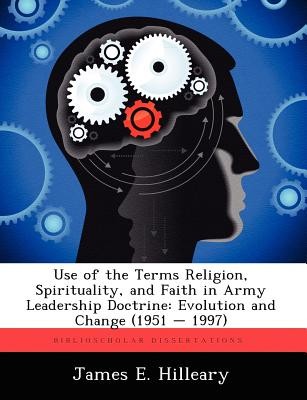
- We will send in 10–14 business days.
- Author: James E Hilleary
- Publisher: BiblioScholar
- ISBN-10: 1249440122
- ISBN-13: 9781249440123
- Format: 18.9 x 24.6 x 0.5 cm, softcover
- Language: English
- SAVE -10% with code: EXTRA
Use of the Terms Religion, Spirituality, and Faith in Army Leadership Doctrine (e-book) (used book) | bookbook.eu
Reviews
Description
This study reviews U.S. Army leadership doctrine published during the period 1951 to 1990 and presently emerging in 1997. It focused on the Army's change in the use of the terms religion, spirituality, and faith as printed in the Army Field Manual (FM) series 22-10 and 22-100. To compare the manuals, the investigator identified the frequency with which the terms religion, spirituality, and faith appeared in each FM. Additionally, he utilized a context analysis and content assessment to determine each manual's message regarding religion, spirituality, and faith. The authors of the FM 22-100 series changed the frequency of their term-use considerably. These changes alone, however, did not offer substantial insight into the Army's messages regarding religion, spirituality and faith. The investigator determined from the context analysis and content assessment that from 1951 to 1983 the Army primarily instructed leaders to support some aspect of their own or their subordinates' religion, spirituality, or faith. This trend began to change in 1990 when FM 22-100 decreased the emphasis on religion and spirituality. In 1997, the emerging FM 22-100 (Initial Draft) changed the context and content patterns by disassociating Army values from religious values and emphasizing the private nature of religious choice.
EXTRA 10 % discount with code: EXTRA
The promotion ends in 17d.14:13:40
The discount code is valid when purchasing from 10 €. Discounts do not stack.
- Author: James E Hilleary
- Publisher: BiblioScholar
- ISBN-10: 1249440122
- ISBN-13: 9781249440123
- Format: 18.9 x 24.6 x 0.5 cm, softcover
- Language: English English
This study reviews U.S. Army leadership doctrine published during the period 1951 to 1990 and presently emerging in 1997. It focused on the Army's change in the use of the terms religion, spirituality, and faith as printed in the Army Field Manual (FM) series 22-10 and 22-100. To compare the manuals, the investigator identified the frequency with which the terms religion, spirituality, and faith appeared in each FM. Additionally, he utilized a context analysis and content assessment to determine each manual's message regarding religion, spirituality, and faith. The authors of the FM 22-100 series changed the frequency of their term-use considerably. These changes alone, however, did not offer substantial insight into the Army's messages regarding religion, spirituality and faith. The investigator determined from the context analysis and content assessment that from 1951 to 1983 the Army primarily instructed leaders to support some aspect of their own or their subordinates' religion, spirituality, or faith. This trend began to change in 1990 when FM 22-100 decreased the emphasis on religion and spirituality. In 1997, the emerging FM 22-100 (Initial Draft) changed the context and content patterns by disassociating Army values from religious values and emphasizing the private nature of religious choice.


Reviews